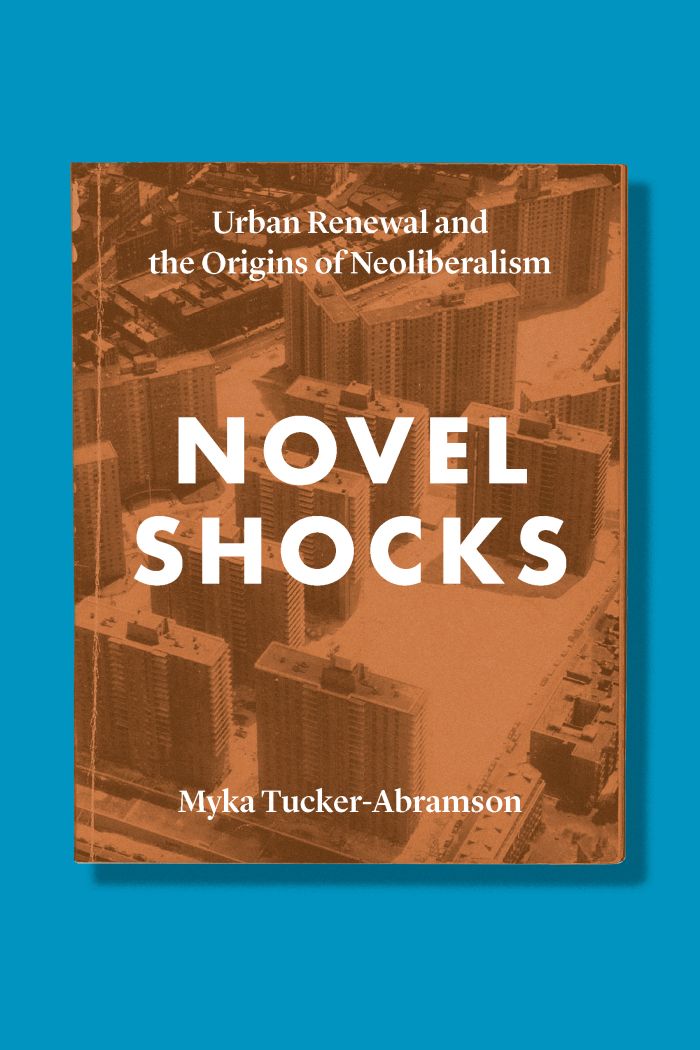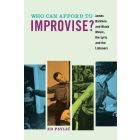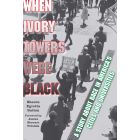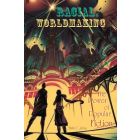Novel Shocks
Urban Renewal and the Origins of Neoliberalism

This book can be opened with

Throughout the 1950s, a coalition of developers, politicians, and planners bulldozed vast areas of land deemed “slums” or “blighted” to make way for freeways, public and private housing projects, cultural centers, and skyscrapers. While the program was national, New York was ground zero, and the demolition and monumental reconstruction of the city created a distinctive urban sensorium, rooted in the new segregated landscapes of prosperous white private space and poor black public space.
Novel Shocks situates these landscapes at the center of the midcentury novel, arguing that James Baldwin, Ralph Ellison, Patricia Highsmith, Ayn Rand, William Burroughs, Sylvia Plath, and Warren Miller all registered these new urban spaces as traumatic “shocks” that required new aesthetic forms. Rejecting older shock-based modernisms, these novelists forged a new modernism, which reimagined shock as a therapeutic force that would create a more flexible, self-reliant, and resilient subject that would nourish neoliberalism’s roots. In offering a cultural prehistory of neoliberalism, Novel Shocks resituates the Cold War novel as a key archive for understanding neoliberalism’s emergence and offers a more materialist and historically grounded account of neoliberalism’s subjective, affective, and ideological structures.
Myka Tucker-Abramson reinterprets twentieth century American urbanism and political economy through provocative, original readings of postwar writers including James Baldwin, Patricia Highsmith, William Burroughs, Ayn Rand, and Sylvia Plath. She traces the path to neoliberalism through literary encounters with urban renewal and dispossession, the suburban 'frontier,' and globalism. Few books so effectively bridge literary and urban studies.—Thomas J. Sugrue, Professor of Social and Cultural Analysis and History, New York University
Tucker-Abramson's book earns high praise: it dwells persuasively in its details, while theorizing its political and aesthetic findings in ways that make shock an unavoidable topic of midcentury US empire.—Modern Philology
...Novel Shocks remains a necessary intervention into the field of urban literary studies, one that extends, deepens, and revises the work of critics like Carlo Rotella, Thomas Heise, and Catherine Jurca. The book illustrates how, at the moment of their separation, the urban cores and suburban peripheries of US cities were complexly intertwined, and how writers helped bring neoliberalism into being by exploring the material and affective links between these spaces.—American Literary History Online Review
Introduction 1
1. Blueprints: Invisible Man and the Great Migration to White Flight 25
2. The Price of Salt Is the City: Patricia Highsmith and the Queer Frontiers of Neoliberalism 46
3. Naked Lunch, Or, the Last Snapshot of the Surrealists 63
4. Shock Therapy: Atlas Shrugged, Urban Renewal, and the Making of the Entrepreneurial Subject 84
5. Fallen Corpses and Rising Cities: The Bell Jar and the Making of the New Woman 104
Conclusion: The Siege of Harlem and Its Commune 125
Acknowledgments 139
Notes 143
Works Cited 163
Index 185






